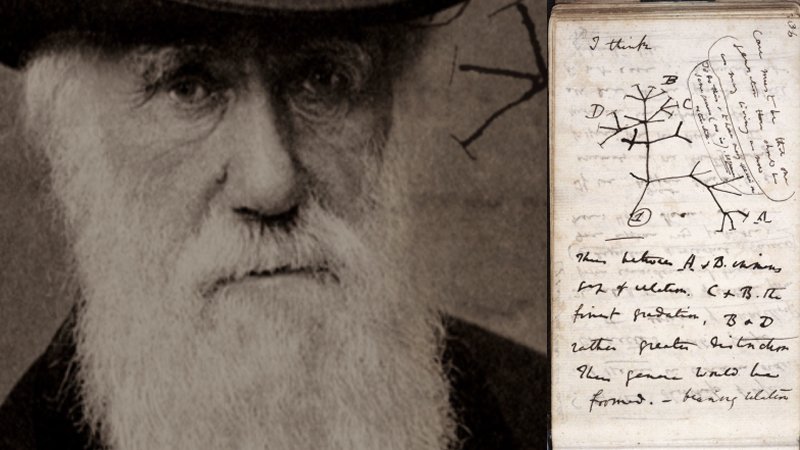Eddie Gonzales Jr. – AncientPages.com – Cambridge University Library has announced that two notebooks written by Charles Darwin, worth many millions of pounds are missing, believed to have been stolen.
Both of these notebooks contain his pioneering ideas on evolution and his famous “Tree of Life” sketch.
“We’ve launched a public appeal for help in tracking down two missing notebooks belonging to Charles Darwin – one of which includes his iconic Tree of Life sketch. We are heartbroken by the loss. Can you help? the Cambridge University Library asks.
Following an exhaustive search, the largest in the library’s history, curators have concluded that the notebooks, first listed as missing in January 2001, have likely been stolen.

Credit: Cambridge University Library
Cambridgeshire Police have been informed and their disappearance has been recorded on the national Art Loss Register for missing cultural artifacts. The library’s missing notebooks have also been added to Interpol’s database of stolen artworks – Psyche.
Cambridge University Library has taken advice from external experts in security and cultural ᴀsset recovery to help in the search, and will work alongside other partners in the book trade, including the Antiquarian Booksellers’ ᴀssociation.
The appeal launch on November 24 coincides with what is commonly known each year as ‘Evolution Day’ – recognizing the anniversary of Darwin’s publication of On the Origin of Species on November 24, 1859, and highlighting the great naturalist’s immense contribution to the history of science.
Dr. Jessica Gardner, University Librarian and Director of Library Services since 2017, said: “I am heartbroken that the location of these Darwin notebooks, including Darwin’s iconic ‘Tree of Life’ drawing, is currently unknown, but we’re determined to do everything possible to discover what happened and will leave no stone unturned during this process.
“We would be hugely grateful to hear from any staff, past or present, members of the book trade, researchers, or the public at large, with information that might ᴀssist in the recovery of the notebooks.
“Someone, somewhere, may have knowledge or insight that can help us return these notebooks to their proper place at the heart of the UK’s cultural and scientific heritage.”
Detective Sergeant Sharon Burrell, of Cambridgeshire Police, said: “We are appealing for anyone with any knowledge of the whereabouts of these priceless artifacts to contact us. They are extremely valuable and important, both to the university, and anyone interested in the history of science.
“I hope the publicity surrounding their potential theft jogs someone’s memory and leads to information coming to light that results in their return. Due to the time since their disappearance, information from the public will be very important to this investigation.
“We have made initial inquiries to trace their whereabouts, including contacting Interpol to place the items on their Stolen Works of Arts Register.”
Anyone who may have information about the missing notebooks is asked to contact Cambridge University Library via email at [email protected], anonymously if they wish.
Alternatively, you can contact Cambridgeshire Police via web-chat, on 101 quoting crime reference number 35/71468/20 or by visiting www.cambs.police.uk/report.
You can also contact Crimestoppers, anonymously, on 0800 555111 or via www.crimestoppers-uk.org.
Written by Eddie Gonzales Jr. – AncientPages.com – MessageToEagle.com Staff





